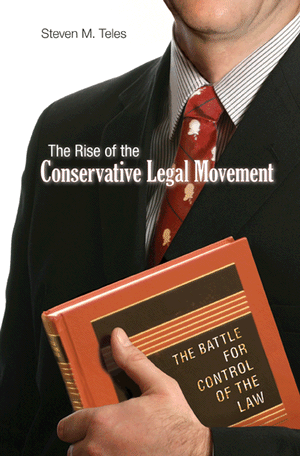 Hat tip to the Legal Theory Blog. Legal historians may take a special interest in Tushnet's comparison of the Federalist Society with "Felix Frankfurter and the 'Happy Hot Dogs' of the New Deal." Here's the abstract (my thoughts on Teles follow):
Hat tip to the Legal Theory Blog. Legal historians may take a special interest in Tushnet's comparison of the Federalist Society with "Felix Frankfurter and the 'Happy Hot Dogs' of the New Deal." Here's the abstract (my thoughts on Teles follow):Teles is essential reading for anyone interested in late 20th century legal history or the role of institution-building in social change efforts. One point Tushnet doesn't raise in this extremely helpful review, in spite of his title, is the way Teles's fine but necessarily focused work underplays the role of certain ideas in "the conservative legal movement."Steven Teles's book, The Rise of the Conservative Legal Movement, is a case study of ideological challenge. Teles, a political scientist, emphasizes the institutional dimensions of such challenges. Relying on interviews and internal documents produced by conservative organizations, he examines the development of conservative litigating groups (i.e., conservative public interest law firms), the growth of the Federalist Society, and the embedding of law and economics within the legal academy. There have been similar studies of liberal public interest law firms and of the rise of liberal legalism in the academy, but Teles's is the first to look on the other side of the ideological divide. And, given the dominance of liberal legal ideology, his analysis brings out in sharp relief many new insights into the institutions that affect the outcomes of ideological contests. In addition, Teles connects his analysis to a broader theme in recent studies of American political development. The rise of the
conservative legal movement was intimately connected to changes in the dominant political order that have occurred over the past thirty years: the decay of the New Deal-Great Society political order, and the Reagan Revolution and its limits. In these ways Teles provides a firm foundation for thinking (or perhaps merely speculating) about future developments in the institutional apparatuses associated with conservative and liberal legal thought.This Review summarizes and critiques Teles's analysis of the three components of the conservative legal movement, beginning with the least important, law and economics in the legal academy, and then turning to conservative public interest law firms and the Federalist Society. It concludes with some speculations about the future of that movement, in light of the connection Teles rightly draws between that movement and the American political regime of the late twentieth century.
Left out of Teles's account is the role of the religious right, and I suspect that this is the reason that abortion rights play so little role in Teles's description of legal conservatism. Roe v. Wade was not just a case, but also a catalyst for organizing against the Court, enabling fund raising efforts and mass mobilization.
Others have criticized Teles for this absence, and Teles, a careful political scientist, has an appropriate response: First, another book covers religious conservatives, Steven Brown’s Trumping Religion: The New Christian Right, The Free Speech Clause, and the Courts (Alabama, 2004), and "One of the main reasons I did not go into the subject at any greater length than I did was that I did not feel I had much to offer that Brown had not already covered." Second, and perhaps more important, Teles explains: "while I believed I was already reasonably far up the learning curve on the subjects I covered in the book (despite not being a lawyer), I do not have any particular training or background in Christian conservatism....To write a book like mine that covered Christian conservatives would require that the author have an intuitive sense of that part of the movement, and in all honesty, that is not part of my intellectual capital." He develops this point here.
But this means that Teles's point that he could only do so much and has not written a comprehensive history of legal conservatism must be kept in mind when we draw lessons from this work about the content and impact of the conservative legal movement. (I also wonder whether conservative women, who rarely appear in this otherwise excellent book, would play more of a role in a broader account.)
Because of this, although the book is a must-read for anyone interested in legal thought in the late 20th century, the limitations of Teles's methodology mean that, at least when it comes to the movement's motivating ideas, it cannot be read as a history of the conservative legal movement, but instead of critically important parts of it.